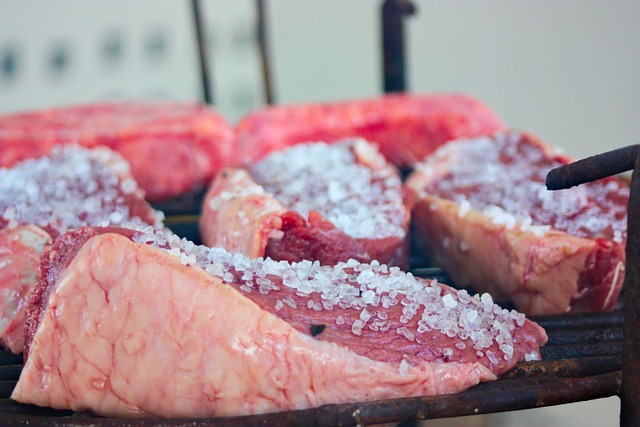Kratom, native to Southeast Asia and grown successfully in Utah, offers therapeutic benefits including pain relief, anxiety reduction, and energy stimulation, aiding athletes' post-workout recovery. Its primary alkaloid, mitragynine, interacts with opioid receptors. Local cultivation via initiatives like grow kratom Utah ensures a consistent supply for those seeking natural recovery solutions, particularly in regions with limited medical options. Home growers can cultivate high-quality kratom using proper techniques to support effective recovery year-round.
Discover the power of kratom as a natural ally for your post-workout recovery. This herbal supplement, with its rich history, has gained popularity among athletes and fitness enthusiasts. In this comprehensive guide, we explore how kratom can aid in muscle soreness relief and enhance mental focus. We delve into the science behind its effects, offering insights into its potential to accelerate physical and mental restoration. Additionally, learn about the art of growing your own kratom in Utah with our step-by-step cultivation guide.
- Understanding Kratom and its Potential Benefits for Training Recovery
- The Science Behind Kratom's Effects on Physical and Mental Recovery
- Growing Your Own: A Guide to Kratom Cultivation in Utah
Understanding Kratom and its Potential Benefits for Training Recovery
Kratom, scientifically known as Mitragyna speciosa, is a plant native to Southeast Asia that has gained popularity for its potential therapeutic benefits. Growing kratom in Utah, or anywhere else, offers individuals access to this natural resource for various purposes, including training recovery. The plant contains several compounds called alkaloids, with mitragynine being the most prominent and well-studied. This compound is believed to interact with opioid receptors in the brain, providing pain relief and potentially reducing anxiety.
For athletes or fitness enthusiasts, kratom can be a valuable addition to their post-workout routine. Its ability to stimulate energy levels while also promoting relaxation might aid in faster recovery after intense physical activity. Some users report that kratom helps alleviate muscle soreness and fatigue, enabling them to get back to training sooner. However, it’s essential to approach its use with caution, as individual responses can vary, and proper dosage is crucial for safe and effective recovery support.
The Science Behind Kratom's Effects on Physical and Mental Recovery
Kratom, a natural herb grown in regions like Utah, has gained significant attention for its potential benefits in aiding physical and mental recovery after training or intense exercise. The plant contains various alkaloids, with mitragynine being the primary active compound, known to interact with opioid receptors in the brain, offering both pain-relieving and mood-boosting effects. This interaction can accelerate post-workout recovery by reducing muscle soreness and improving sleep quality, which is crucial for athletes looking to optimize their performance.
Scientific studies have explored kratom’s role in managing chronic pain and its potential as a natural alternative to prescription opioids. The herb’s ability to induce relaxation without sedative effects makes it appealing for those seeking relief from training-induced stress and anxiety. Furthermore, kratom’s positive impact on mood and cognitive function can enhance mental recovery, allowing athletes to maintain focus and motivation throughout their training regimens. Growing and cultivating kratom locally, as seen with the successful grow kratom Utah initiatives, ensures a consistent supply for those interested in its therapeutic benefits.
Growing Your Own: A Guide to Kratom Cultivation in Utah
In Utah, where traditional medicine options for recovery might be limited, growing your own kratom offers a promising alternative. Kratom cultivation allows individuals to take control of their post-training recovery process, ensuring access to this herbal remedy year-round. The process begins with acquiring high-quality kratom seeds or cuttings from reputable suppliers, considering factors like strain preferences and climate adaptation for optimal growth.
Utah’s unique climatical conditions present both challenges and opportunities for successful kratom cultivation. Despite the state’s arid environment, proper growing techniques, including adequate water management, controlled temperatures, and optimized light exposure, enable healthy kratom plants to thrive. Home growers can utilize indoor gardening setups with precise environmental controls or create a semi-outdoor habitat that mimics the plant’s natural forest dwelling, fostering robust and bountiful kratom crops for effective recovery support.
Kratom has emerged as a natural ally for athletes and fitness enthusiasts seeking enhanced recovery. With its diverse bioactive compounds, it offers both physical and mental benefits, aiding in muscle pain relief, reducing inflammation, and promoting relaxation. For those interested in cultivating their own kratom at home, especially in Utah, the article provides a comprehensive guide to successful cultivation. By understanding the science behind kratom’s effects and mastering the art of growing your own, individuals can take control of their recovery journey and unlock the full potential of this remarkable plant.














